Access 2013
Formatting Forms
Modifying form layout
When you create a form, Access arranges the form components in a default layout where the fields are neatly stacked up on top of each other, all exactly the same width. While this layout is functional, you might find that it doesn't best fit your information. For instance, in the form below, most of the fields are almost completely empty, since the data stored there doesn't take up much room.
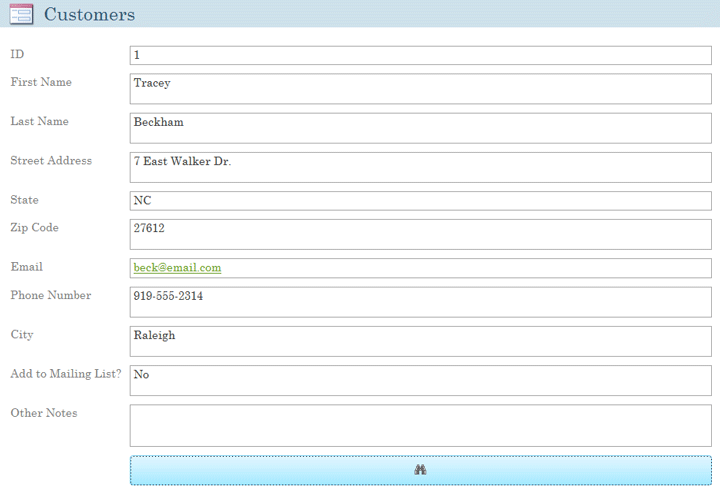 A form with the default layout
A form with the default layoutThe form would fit the data a little better if we made the fields and command buttons smaller and even put some of them side by side. However, with the default layout, you won't be able to put two fields next to each other or resize one field or button without resizing them all. This is because Access lines up form components in rows and columns. When you resize a field, you're really resizing the column that contains it.
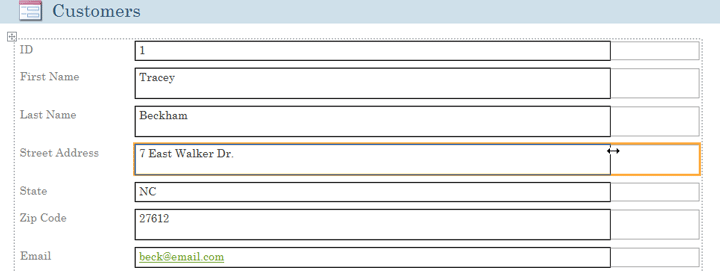 All of the selected fields are contained in one column, making it impossible to resize just one
All of the selected fields are contained in one column, making it impossible to resize just oneTo resize and rearrange our fields the way we want, we'll have to modify the form layout. For instance, because the default layout for our form contains only two columns—one for the field labels and another for the fields—we would have to create a new column to put two fields side by side.
We can do this using the command on the Arrange tab, which contains all of the tools we'll need to customize a form's layout. If you've ever built and modified tables in Microsoft Word, you already know how to use most of these tools. If you're unfamiliar with tables, review the lesson on Tables from our Word 2013 tutorial.
 The commands on the Arrange tab
The commands on the Arrange tabTo resize form components:
- Switch to Layout view.
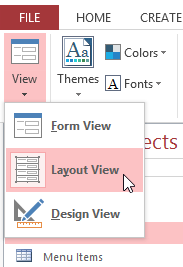 Switching to Layout View
Switching to Layout View - Select the field or button you would like to resize, then hover your mouse over the edge. Your cursor will become a double-sided arrow.
- Click and drag the mouse to resize the selected object.
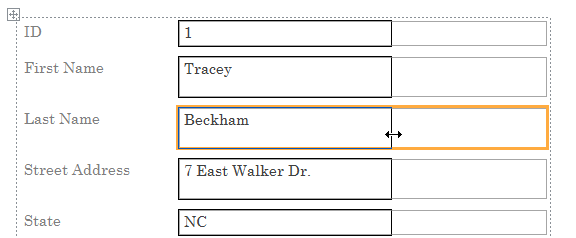 Clicking the edge of a field to resize it
Clicking the edge of a field to resize it - The field or button will be resized, as well as every other item aligned with it.
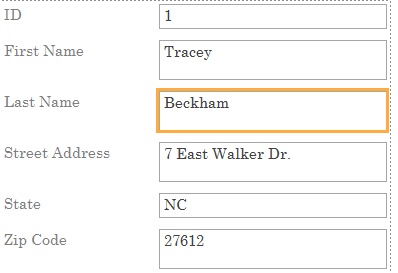 The resized fields
The resized fields
To move form components:
- If necessary, add columns or rows to make room for the field or button you wish to move by using the Insert commands in the Rows & Columns group. In our example, we want to move the Last Name field to the right of the First Name field, so we'll have to create two new columns to the right: one for the field label, and one for the field itself. To do this, we'll click the Insert Right command twice.
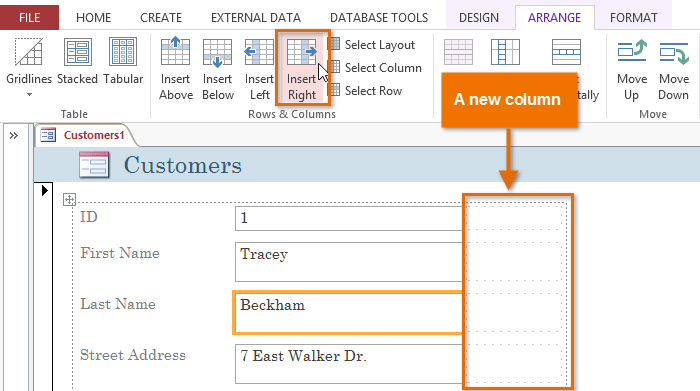 Inserting a new column
Inserting a new column - Click and drag the field or button to its new location. If you're moving a field, make sure to move the field label as well.
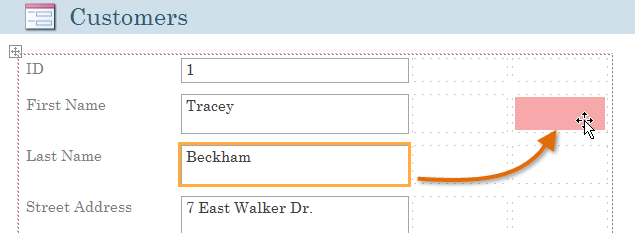 Moving a field
Moving a field - Repeat the steps above for any other fields or buttons you wish to move.
 The form after moving several fields
The form after moving several fields
If you would like to make a field take up more or less space than one column, you can use the Merge and Split commands. The Merge command combines two or more cells, while the Split command divides a cell.
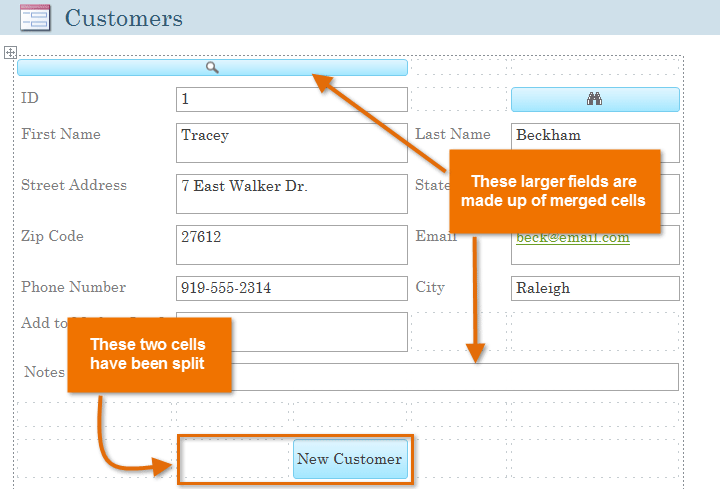 Fields in merged and split cells
Fields in merged and split cells





